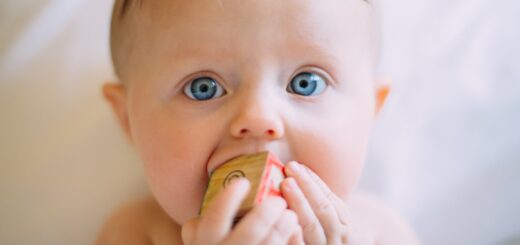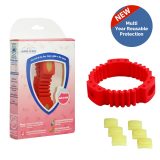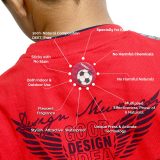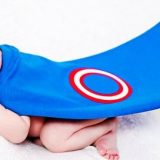A doctor’s checklist for baby proof product recommendations

As technology changes and homes become more luxurious, chances that a baby will injure themselves accidentally only keep increasing. As a doctor, you must have seen a steady rise in cases of toddlers and infants getting hurt unintentionally. Most times these are minor injuries and scrapes. But the frequency of serious injurious has been rising steadily. This is because the voracious curiosity in children has begun burgeoning. The youngest upcoming generation has a mind capable of what you and I couldn’t have possibly fathomed at that age. The other reason for this is because beyond being just functional, our homes are now being decorated extravagantly with intricate designs, murals as well as artifacts. These look majestic and the overall appeal of the home is upped. Unfortunately, children seldom understand or respond to our instructions. They get excited in a quest of learning new things and throw all caution to the wind. The problem is that these injuries can cause long-lasting and sometimes even life-altering harm to the child. A fall from a steep height can cause permanent brain damage. A scrape or a scar will leave a mark on their cute and adorable little hands for the rest of their lives.
Doctors, like you, recommend the use of baby-proofing products to parents. These are simple, functional, and great products that can ease the life of parents significantly. Children are clumsy, they get hurt easily. To prevent unnecessary injuries and ouchies, doctors should ask parents to invest in baby-proofing products. After all, it is an investment for the future.
But, what should doctors keep in mind before recommending individual products to parents? That’s exactly what we will be discussing today. So you can ensure the recommendations you give are iron-clad and perfect. Firstly, break down recommendations – You should consider breaking down the day into smaller activities and then suggest products that are applicable to those specific activities. Then consider the following:
BPA free: You must ensure that any product you recommend is BPA free. What is BPA? BPA is an abbreviation for bisphenol A, found in polycarbonate plastics and epoxy resins. Parents have quickly realized that plastic is their best friend. It can’t break, it can keep things warm and cool and can be reused over and over again. But bottles, sippers and plates that are coated with BPA can be extremely dangerous to a growing child. It can seep through from the item into the food and then be passed onto the baby. According to Healthline magazine, due to its resemblance to estrogen, BPA may enter the bloodstream and affect bodily functions like growth, repair, hormonal balance, cognitive development, and more. It has been surmised that children born to mothers with high BPA exposure were comparatively more hyperactive and prone to anxiety as well as depression. For this reason, please ask parents to ensure that products are clearly BPA-free certified, as must be your recommendations.
Non-abrasive: Babies are soft and delicates. Their skin, their hair, their head, and even their gums are squishy and can be pierced easily, by even the bluntest objects. It is, for this reason, you must ensure that all your recommendations are specifically soft and designed not to cause any damage. Even the edge of a sharp spoon can cut their tongues or gums. A blanket made of synthetic material can cause painful rashes and lead to hive formation. All the products that you recommend must be comfortable as well as soft. For example, the edges of a spill-proof bottle must not be serrated to ensure that gums don’t get cut.
Safe paints and varnishes : The paint applied on many baby proofing items must be certified to be safe. The paint should be completely water-based along with an optional microbial add-on. This prevents the formation of fungus and bacteria on items that children will inevitably try to put in their mouths. The rails for bed guards and stairs must be either painted with this safe paint or covered in a varnish that has been certified safe for use around children. Children have very sensitive noses and inhaling the fumes of toxic paint and varnishes can lead to severe neurological damage. Lead paint can cause harm to babies even before they’re born! Only a tiny amount is needed to harm a young child.
Choking risk: All the baby-proofing products that you recommend must be free from choking hazards. Children have a tendency to put whatever they find in their mouths. If that baby-proofing product has small and easily detachable pieces, the product is not a good one and can cause damage instead of preventing it. Even if the pieces are detachable to keep the product easily dismantled, a child must not be able to do it, that would defeat the entire purpose of it being a baby-proofing product. For example, the pressure cups at the bottom of a vacuum lock flip proof plate must not be easily detachable, they may become choking hazards.
Cost: Most parents are under financial duress during the first few years of a child’s life. This is simply because no amount of financial planning can estimate the expenditures headed their way. While you and we both know that a baby-proofing kit is essential, parents may not always be easily convinced. For them, it may appear like over a top and unnecessary addition to their already long list of bills. Hence, you must remember to recommend products that don’t break the bank to parents. They will appreciate the effort and concern you’re putting in and your advice won’t fall upon deaf ears. They’ll save a rupee or two and their child will be safe!
Stimulating: Any product designed for a baby should have the purpose of stimulating their minds. Even a baby-proofing product. The use of playful colours as well as shapes can be beneficial. Contrasting hues help children as they grow and develop the complexities of color vision while the ability to grasp onto and play with various shapes helps their fine motor skill development as well as depth perception. Baby-proofing product designers have kept this under consideration during their construction. Be sure to keep these interesting facts in mind while offering recommendations to parents.
Durable: More than anything else, the products that you recommend must be durable and long-lasting. The need for these products is long-term for most children and generally, they should not need to be bought multiple times through a single childhood. Products are usually quality tested for tensile strength and manufacturing defects. Even still, only products that you swear by for all of their qualities must be recommended. Cheaper products may appear appealing to most parents. It is your duty to steer them clear of products that have a history of being easily broken or worse, ineffective. Finding the balance between quality and affordability is something you can easily manage, due to your years of experience with these baby-proofing products.
Children are tiny humans that are slowly but surely gauging their bearing in this topsy-turvy world. They are born with over three hundred bones that will eventually fuse together to form the two hundred and six that adults have. Curiously, babies are born without knee caps, they develop them through their early years. When they’re born, their stomachs are about the size of a walnut — no wonder they need to be fed so often! As they grow, they can absorb copious amounts of information. They are capable of learning up to five new words a day, at the age of just eighteen months. A study has found that a four-year-old asks about five hundred questions a day, phew! They’re more than just chaotic poop monsters. 🙂
As children grow, their idiosyncrasies help them develop individual skill sets and personalities. They need to be protected against themselves sometimes. Ineptitude comes along with their existence. Parents must therefore consider investing in baby-proofing products. But, before they make a purchase, they will usually consult a doctor — you! Convincing them that it is needed is the first hurdle, then comes the suggestions part. The technical know-how of various products to overcome the challenges they are facing is an important arrow in your quiver. Sharpen it. Harness it.
Since you have done your research, you can easily suggest which baby-proofing products are a prudent purchase and which of them are pointless. Doctors are the ultimate arbiters in most decisions that parents are unsure of; we urge you to consider all the aforementioned ideas before making recommendations to parents. Protecting children from harm is on everyone’s agenda. These products make life easier, for both parents as well as you. Chances of major injury are rare and mostly only happen in freak cases due to a series of unfortunate events. However, it is better to have and not need than to need and not have.















